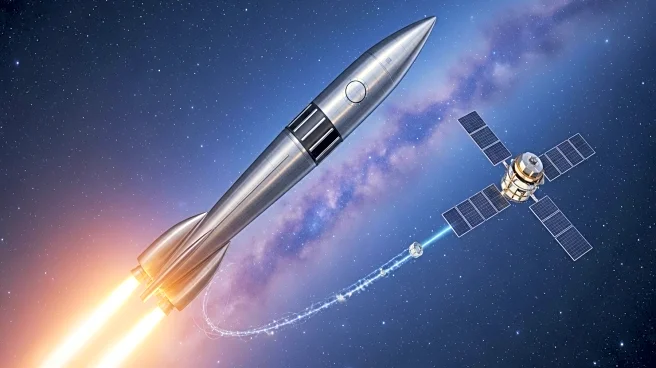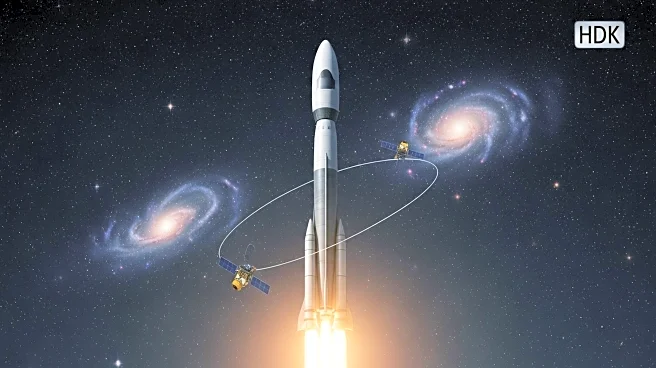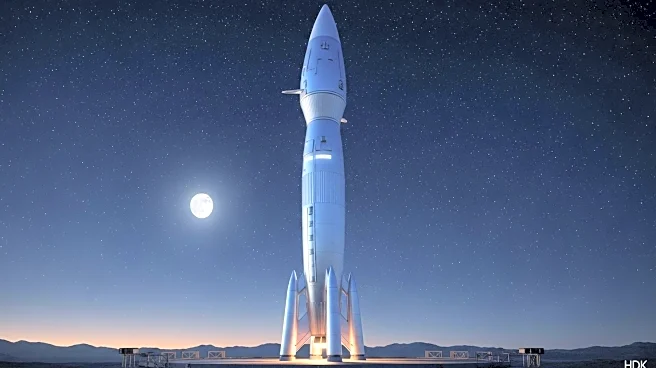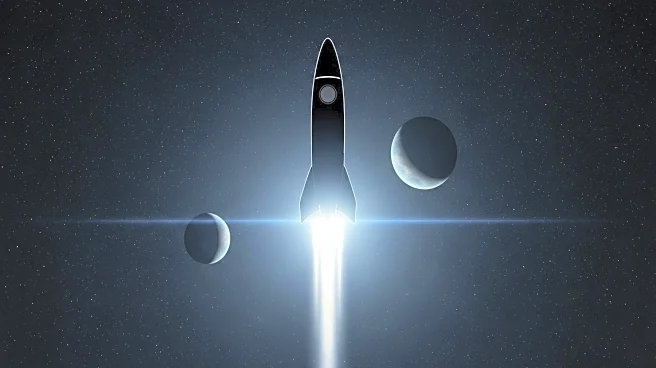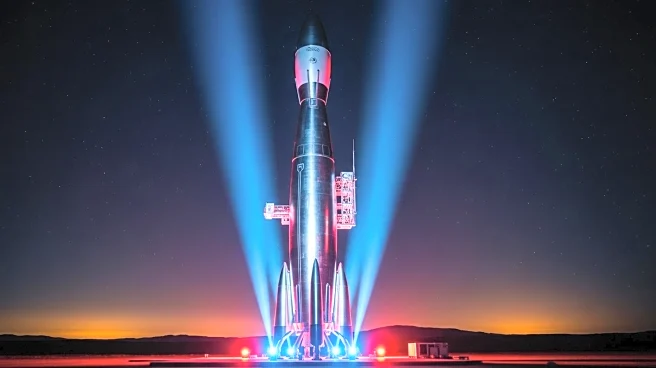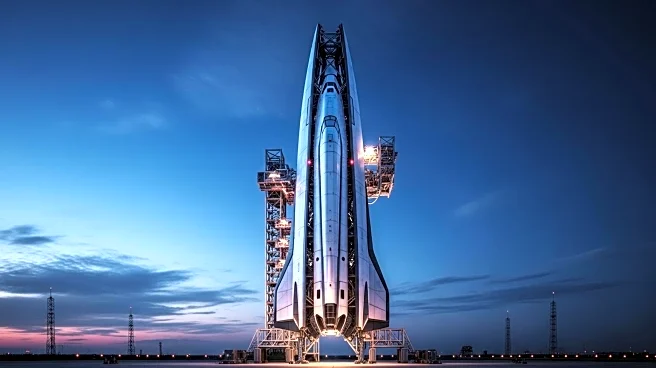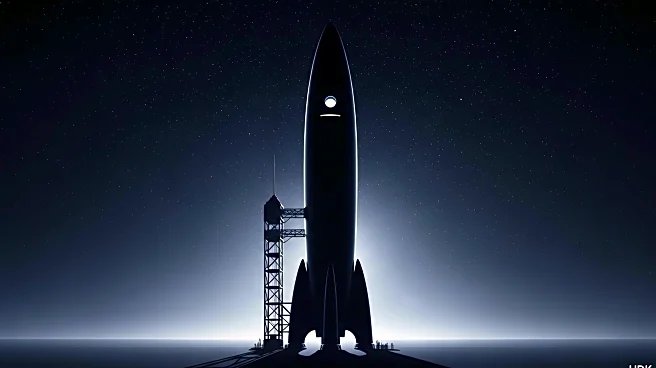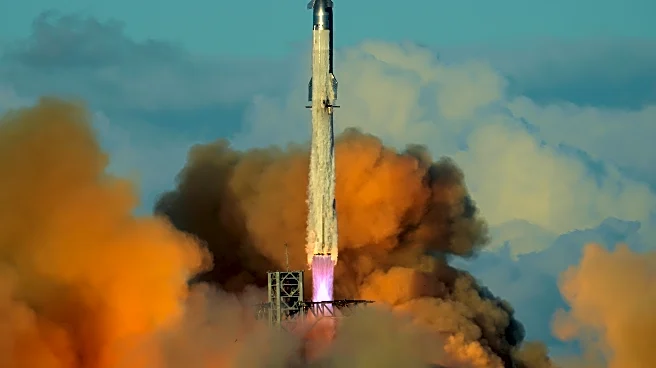What's Happening?
SpaceX launched its 11th test flight of the Starship rocket from Texas, marking another successful mission. The rocket, the largest and most powerful ever built, completed a journey halfway around the world, releasing mock satellites during its flight. The booster separated and entered the Gulf of Mexico, while the spacecraft skimmed space before descending into the Indian Ocean. SpaceX founder Elon Musk aims to use Starship for Mars missions, while NASA plans to use it for lunar landings. The flight included tests for future landings, and NASA's acting administrator praised the progress.
Why It's Important?
The successful test flight of SpaceX's Starship is crucial for future space exploration, particularly for NASA's lunar missions. The reusable rocket is intended to transport astronauts from lunar orbit to the moon's surface, a key component of NASA's plans to land humans on the moon by the end of the decade. The progress of Starship also supports SpaceX's long-term goal of Mars colonization, potentially revolutionizing space travel and exploration. The development of such technology could have significant implications for the aerospace industry and international space collaborations.
What's Next?
SpaceX is modifying its launch sites at Cape Canaveral to accommodate Starship, alongside its smaller Falcon rockets. Future test flights will likely focus on refining landing techniques and further satellite deployment capabilities. As SpaceX continues to advance its technology, NASA and other space agencies may increase collaboration to leverage Starship's capabilities for various missions. The success of these tests could accelerate timelines for lunar and Mars missions, influencing global space exploration strategies.
Beyond the Headlines
The development of Starship represents a shift towards more sustainable and cost-effective space travel, with its reusable design potentially reducing mission costs. This innovation could democratize access to space, allowing more countries and private entities to participate in space exploration. Additionally, the environmental impact of space travel may be mitigated through advancements in rocket technology, aligning with broader sustainability goals.
